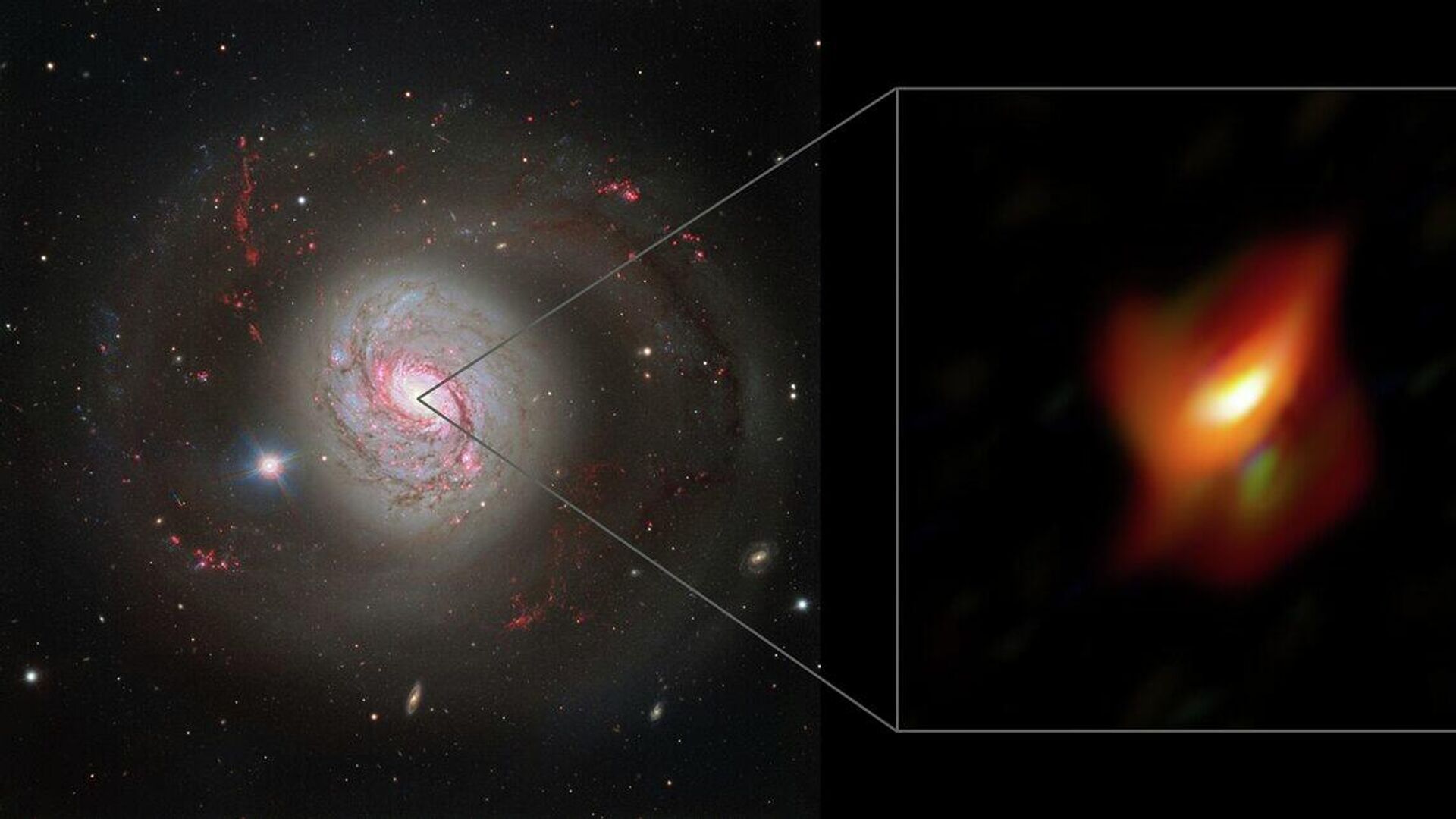https://sputnikglobe.com/20240107/astronomers-reveal-what-infant-galaxies-look-like-1116027647.html
Astronomers Reveal What Infant Galaxies Look Like
Astronomers Reveal What Infant Galaxies Look Like
Sputnik International
Traditionally, astrophysicists have stated that infant galaxies primarily took shape in the recognizable spherical and webbed disc patterns we see today. However, the outcomes of a new study have suggested otherwise.
2024-01-07T12:16+0000
2024-01-07T12:16+0000
2024-01-07T12:16+0000
beyond politics
science & tech
society
newsfeed
james webb space telescope (jwst)
columbia university
university of california
edwin hubble
https://cdn1.img.sputnikglobe.com/img/07e6/02/13/1093164661_0:0:1143:643_1920x0_80_0_0_44373a043c1be45498cf8de858ff2f52.jpg
Astronomers have reassessed images of approximately 4,000 newborn galaxies using the James Webb Space Telescope. The findings presented in the new study reveal that the galaxies' shapes resemble bananas.Over the decades, the prevailing belief among astrophysicists and cosmologists was that nascent galaxies took on the forms of orbs and web-like discs.“This is both a surprising and unexpected result, though there were already hints of it with Hubble,” Viraj Pandya, a postdoctoral fellow at Columbia University and lead author of the forthcoming study Galaxies Going Bananas, told the media.The telescope's findings suggest that ancient galaxies had shapes akin to pickles, according to Joel Primack from the University of California, Santa Cruz, and one of the co-authors of the research.Dr. Pandya's team studied galaxy images in a small sky area called the Extended Groth Strip, previously examined by telescopes like Hubble.If this research outcome is not refuted, it may redefine how astronomers understand galaxies' birth and development.Additionally, media reports suggest it could offer fresh perspectives on the elusive nature of dark matter, a hidden component that scientists suggest comprises a significant portion of the universe's structure, overshadowing conventional matter by a margin of five to one. This invisible matter is pivotal in forming galaxies by providing gravitational foundations.
https://sputnikglobe.com/20231109/photo-webb-hubble-telescopes-join-forces-to-make-panchromatic-image-of-galaxy-cluster-1114854668.html
Sputnik International
feedback@sputniknews.com
+74956456601
MIA „Rosiya Segodnya“
2024
Chimauchem Nwosu
https://cdn1.img.sputnikglobe.com/img/07e7/09/01/1113046371_0:99:1536:1635_100x100_80_0_0_9c5c627283eca931c39fe4852bbb301c.jpg
Chimauchem Nwosu
https://cdn1.img.sputnikglobe.com/img/07e7/09/01/1113046371_0:99:1536:1635_100x100_80_0_0_9c5c627283eca931c39fe4852bbb301c.jpg
News
en_EN
Sputnik International
feedback@sputniknews.com
+74956456601
MIA „Rosiya Segodnya“
Sputnik International
feedback@sputniknews.com
+74956456601
MIA „Rosiya Segodnya“
Chimauchem Nwosu
https://cdn1.img.sputnikglobe.com/img/07e7/09/01/1113046371_0:99:1536:1635_100x100_80_0_0_9c5c627283eca931c39fe4852bbb301c.jpg
james webb space telescope, newborn galaxies, banana-shaped galaxies, astrophysicists, cosmologists, hubble, extended groth strip, dark matter, universe's structure, gravitational foundations.
james webb space telescope, newborn galaxies, banana-shaped galaxies, astrophysicists, cosmologists, hubble, extended groth strip, dark matter, universe's structure, gravitational foundations.
Astronomers Reveal What Infant Galaxies Look Like
Traditionally, astrophysicists have stated that infant galaxies primarily took shape in the recognizable spherical and webbed disc patterns we see today. However, a new study has suggested otherwise.
Astronomers have reassessed images of approximately 4,000 newborn galaxies using the James Webb Space Telescope. The findings presented in the new study reveal that the galaxies' shapes resemble bananas.
Over the decades, the prevailing belief among astrophysicists and cosmologists was that
nascent galaxies took on the forms of orbs and web-like discs.
“This is both a surprising and unexpected result, though there were already hints of it with Hubble,” Viraj Pandya, a postdoctoral fellow at Columbia University and lead author of the forthcoming study
Galaxies Going Bananas, told the media.

9 November 2023, 21:23 GMT
The telescope's findings suggest that ancient galaxies had shapes akin to pickles, according to Joel Primack from the University of California, Santa Cruz, and one of the co-authors of the research.
Dr. Pandya's team studied galaxy images in a small sky area called the Extended Groth Strip, previously examined by telescopes like Hubble.
The Extended Groth Strip, an area in the northern constellation, stands as a tribute to Princeton physicist Edward Groth. Its dimensions, as seen by the Hubble Space Telescope, are 1.1 degrees by 0.15 degrees.
If this research outcome is not refuted, it may redefine how astronomers understand galaxies' birth and development.
Additionally, media reports suggest it could offer fresh perspectives on the elusive nature of
dark matter, a hidden component that scientists suggest comprises a significant portion of the universe's structure, overshadowing conventional matter by a margin of five to one. This invisible matter is pivotal in forming galaxies by providing gravitational foundations.







